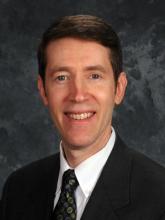GRAPEVINE, TEX. – Hospitalist salaries continue to rise, according to new data from a survey of more than 400 community hospitalist practices.
Nationally, hospitalist compensation was up 3% in 2010, with hospitalists earning on average between $212,000 and $246,000 depending on the area of the country where they worked.
The change from 2009 isn’t especially significant, Dr. John Nelson, a past president of the Society of Hospital Medicine, said in an interview. But it continues the trend over the past decade of rising salaries. That rise has been fueled partially because the demand for hospitalists continues to outstrip the supply, he said. Hospitalists’ productivity has also generally been increasing over the years, leading to greater compensation. And some of the rise is simply the result of cost of living increases and inflation, said Dr. Nelson, who presented the survey data at the SHM annual meeting.
The survey findings provide some interesting macro-level trend data, but compensation is usually determined by market forces on a "micro" level, Dr. Robert Bessler, president and CEO of Sound Physicians, said during a discussion on the survey findings at the annual meeting. He said it’s unlikely that salaries will decline anytime soon since demand for high-quality physicians is likely to remain high.
The survey, which was conducted jointly by SHM and the Medical Group Management Association, includes responses from 414 hospital medicine practices, representing 4,666 adult hospitalists. For the first time, the survey does not include academic practices. The survey, which includes 2010 fiscal year data, asked respondents to report their total compensation, including bonuses. Additional data will be released in September.
The survey also sheds some light on how productive hospitalists were in 2010. The figures are about the same as in 2009. Hospitalists in the Northeast and Southeast did the most work, as measured by billable encounters and work relative value units (RVUs). In the Northeast, hospitalists on average had 2,297 billable encounters annually with 4,092 work RVUs. In the Southeast, hospitalists reported 2,747 annual encounters on average, with 4,931 work RVUs. Annual productivity was slightly lower in the West and Midwest regions, where hospitalists reported on average 1,745 encounters (3,892 work RVUs) and 1,928 encounters (3,858 work RVUs) respectively.
The productivity figures also help to put the salary numbers in perspective, Dr. Nelson explained. By combining the productivity and salary figures, Dr. Nelson explained the "juice-to-squeeze" ratio or the compensation per work RVU. While hospitalists in the Southeast earn the highest annual salaries on average at $246,000, they also have the highest number of work RVUs. That means that hospitalists in the Southeast region actually have the lowest compensation for each unit of work at $52/work RVU. Hospitalists in the Midwest did the best under the juice-to-squeeze ratio at $56/work RVU, even though they in the middle of the pack salary wise at $224,000 annually.
Hospitalists in the Northeast and the West had similar salaries and earnings per work RVU. Those working in the Northeast had average salaries of $212,000 a year or $54/work RVU; while hospitalists in the West earned $213,000 a year or $55/unit of work.
Dr. Nelson said not enough people take the work component into account when evaluating salaries. "It would be like focusing on someone’s weight without also considering their height," he said in an interview. "You have to put both numbers together if you really want to know the situation."
The survey also looked at support for hospitalist programs. In 2010, the level of hospital support reached $132,000 annually for each full-time employee, up from $98,000 in 2009. Dr. Nelson said he’s unsure why the support figured jumped so much in a single year. The economic downturn and the increase in uninsured patients could result for part of that increase, he said. Since, in most cases, hospitals make up the difference between what programs bring in and what’s needed to operate, a drop in collections might explain some of the change. But some of the increase may simply be due to a change in the survey between 2009 and 2010, he said.

